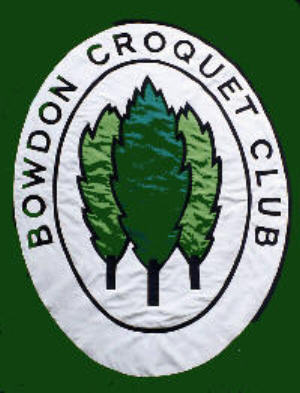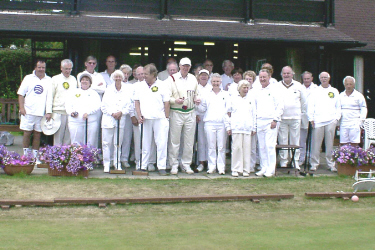BEGINNERS' COURSE
Bowdon Croquet Club runs a
course at the start of each season for complete beginners to the game
in an effort to sustain club membership.
It consists of 6 weekly lessons, each of approximately 2 hours
duration. Advertisements are placed in various publications prior to
the start of the course.
Each week's lesson is based upon group tuition, led by an experienced
club coach and assisted by other club members. Each player needs a
mallet and there are sufficient club mallets to cover this requirement.
Many sets of balls are necessary for group practice so old balls
surplus to the club's requirements are saved for this purpose when they
are taken out of everyday use. A number of bisque sticks will be made
available. Half-sized lawns are used for instruction and practise of
the various topics.
The lessons are structured around those in the Croquet
Association's
Coaching Manual but have been amended slightly to suit our use. Over
the years that the club has been running these courses, it has become
noticeable that some people have great difficulty in grasping the basis
of the 4-ball break and, as such, a change to the course structure has
thought to become necessary.
Coaching is a 2-way process: the coach has to recognise the
difficulties and the needs of the players and has to be able to adapt
to those requirements; the player has to be willing to learn and, where
necessary, to change his techniques. After the instruction of a
particular
subject has been given, course attendees will practise it, usually in
pairs, as an exercise; at the end of each lesson, course attendees will
perform a larger
exercise by way of a pseudo game. This exercise will develop into the
4-ball break.
Lesson 1.
- Object of the
Game
- Colour of the ball pairings
- Indicate the six hoops
- Name the four boundaries
- Ending of a game
- Grip, Stance
and Swing
- Grasp the mallet quite firmly
- Place the mallet head a little behind the ball
- Eyes looking down at the back of the ball
- Practice swinging over the ball as an aid to
aiming and general 'rhythm' of striking the ball
- Keep the body as still as possible
- Make a straight, rhythmic swing,
hitting the ball at the bottom of the swing, that is smooth through the
shoulders like a pendulum and not a flick of the wrists
- Do not lift the head
- Follow through with the mallet (practice)
- Running a
Straight Hoop
- From 1 foot in front (practice)
- From no more than 3 feet (practice)
- Running
an
Angled Hoop
- From a gentle angle (practice)
- From no more than 30 degrees (practice)
- Check to see if ball has run the hoop
|
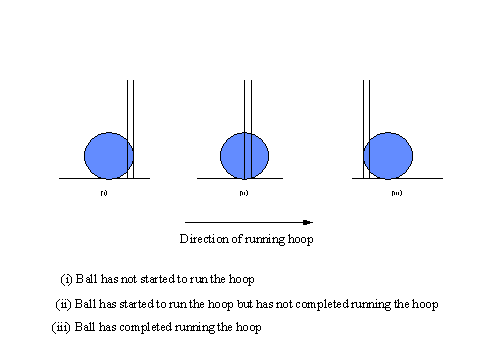
|
- Replacing
Balls on the Yard-Line
- Use of mallet, back to lawn
- Corner spot
- A and B baulk lines
- Roquet Shot
- Running hoop entitles player to one more
stroke
- Hitting a ball earns player two more shots
(roquet, croquet, continuation) (practice)
- Croquet (Thin
Take-Off)
- Balls touching
- Direction of arrow head/tangent
- Hit slightly into croqueted ball
- Movement of croqueted ball
- Strength of shot
- Direction of striker's ball
- Hoop approach (use of forward/backward
take-off)
- Hoop run
|
|
Exercise 1.
Repeat roquet,
croquet and continuation shot to get to the next hoop.
- Playing with red, use yellow, blue and black
(as stepping stones) to
run hoop 1
- Red
gently roquets yellow
- Red
takes off from yellow to blue, 'nudging' yellow towards hoop2
- Red
roquets blue
- Red
takes off from blue to black, 'nudging' blue towards the centre peg
- Red roques
black
- Red
takes off from black to hoop running position
- Red runs
hoop 1
|
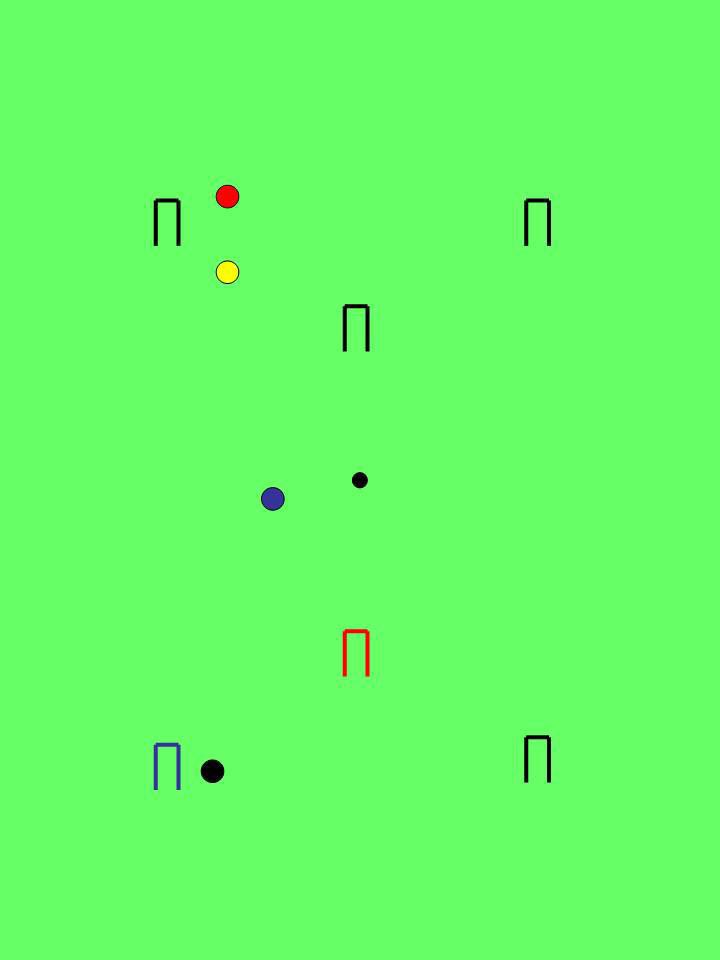
|
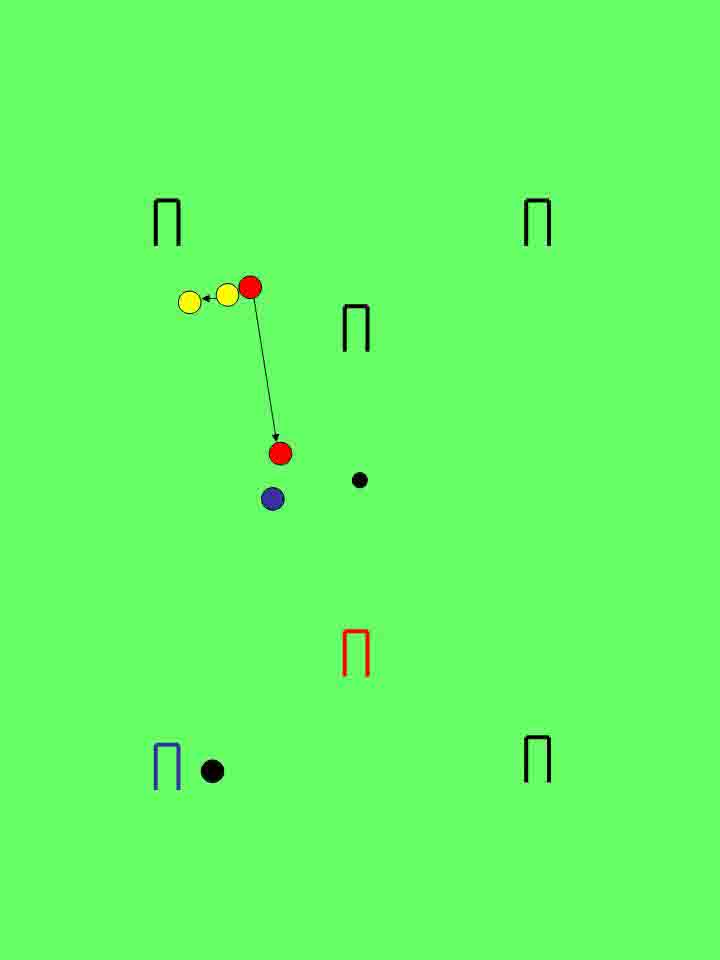
 |
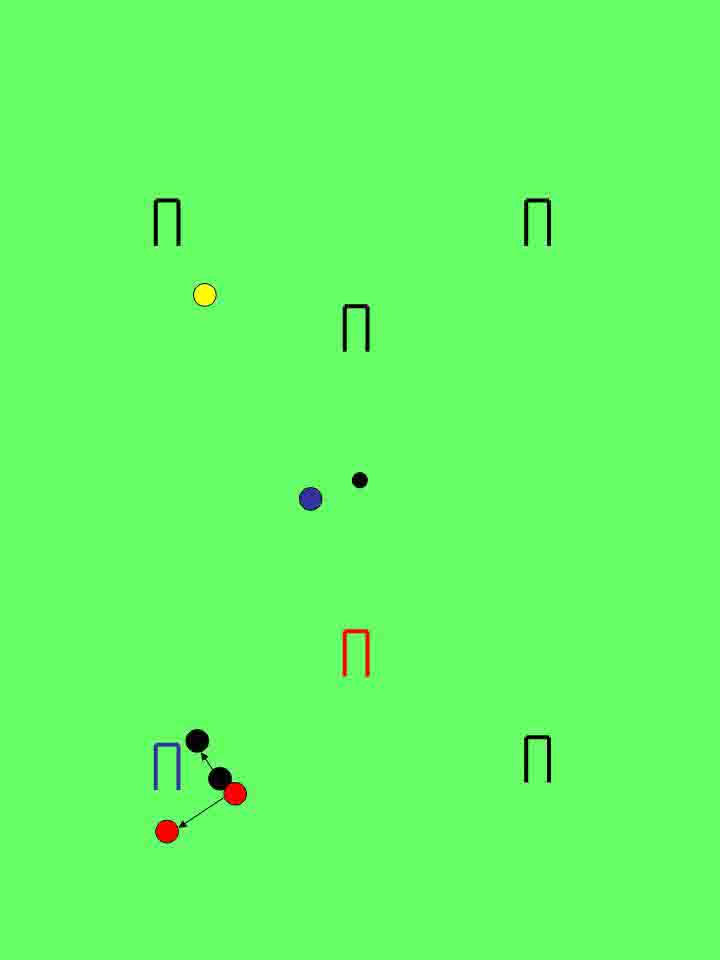
|
Lesson
2.
- Revision of
Roquet, Croquet and Continuation
- Straight Drive
Shot
- Take up standard position
- Standard grip, stance & swing
- Medium strength ratios (practice)
- Soft strength ratios (practice)
- Split Drive
Shot
- Choose targets; place croqueted ball to one
target & striker's ball to the other target
- Direction of strike (split angle/distance)
- Place striker's ball so that the line of
centres of the two balls points towards the chosen target
- Determine the line of aim for the mallet
- Strike the ball with suitable strength
- Note relative distance of balls according to
angle
of strike (practice)
- Hoop
Approaches & Reception Balls
- From
in front of the hoop, use drive to put croqueted ball past hoop as a
reception ball (practice)
- From behind the hoop, take off from croqueted
ball leaving it as a reception ball (practice)
- Straight Rush
- Place two balls one foot apart
- Take up stance for a normal drive and (if
necessary, step
back a few inches to ensure to) hit very slightly on the upswing
- Swing and follow through to rush the forward
ball the distance of half the court
- Do not lift head (practice)
- Repeat for a shorter rush length (practice)
- Cut Rush
- Place two balls one foot apart
- Select gently-angled cut to a target position
- Extend rush line to back of the object ball
to ascertain point of contact (place temporary pseudo ball to visually
emphasise)
- Take up stance for a normal drive, then (step
back a few inches to ensure to) hit very slightly on the upswing
- Swing and follow through to rush the forward
ball
- Do not lift head (practice)
|
|
Exercise 2.
a). A drive shot
putting a pioneer at hoop 2, recreating familiar
Exercise 1.
- Playing with red, use a drive shot to put
yellow to hoop 2, then use blue and black to run hoop 1 (as in Exercise
1)
- Red
gently roquets yellow
- Red drives
yellow to hoop 2
- Red
roquets blue
- Red
takes off from blue to black
- Red
roquets black
- Red
drives/takes off from black to hoop running position, placing black as
a reception ball
- Red runs
hoop 1
- Red
roquets black reception ball
|
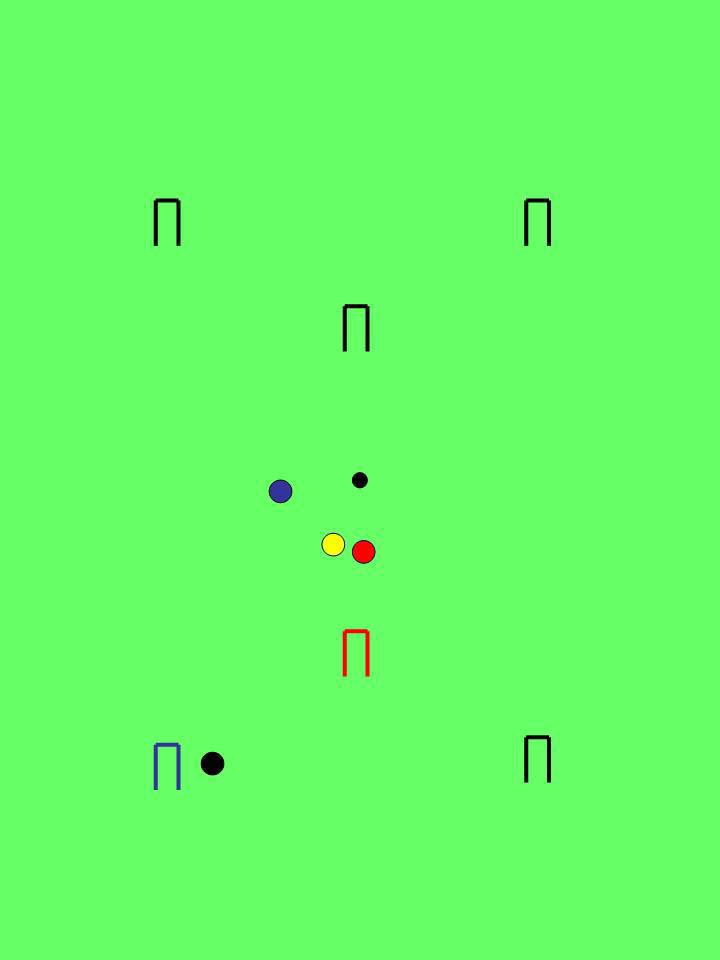
|
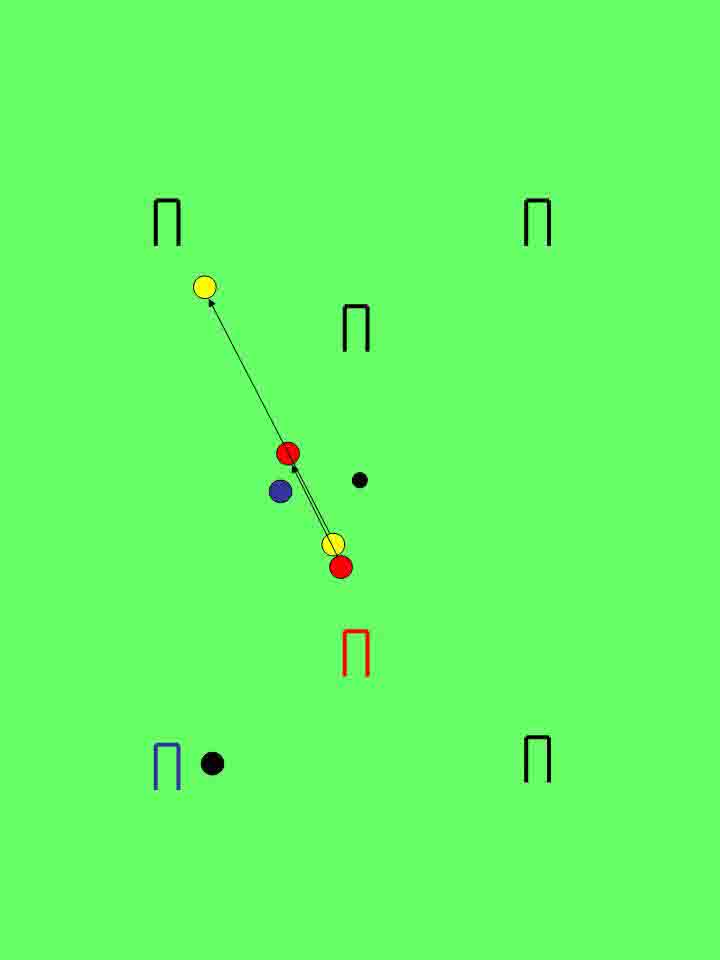 
|
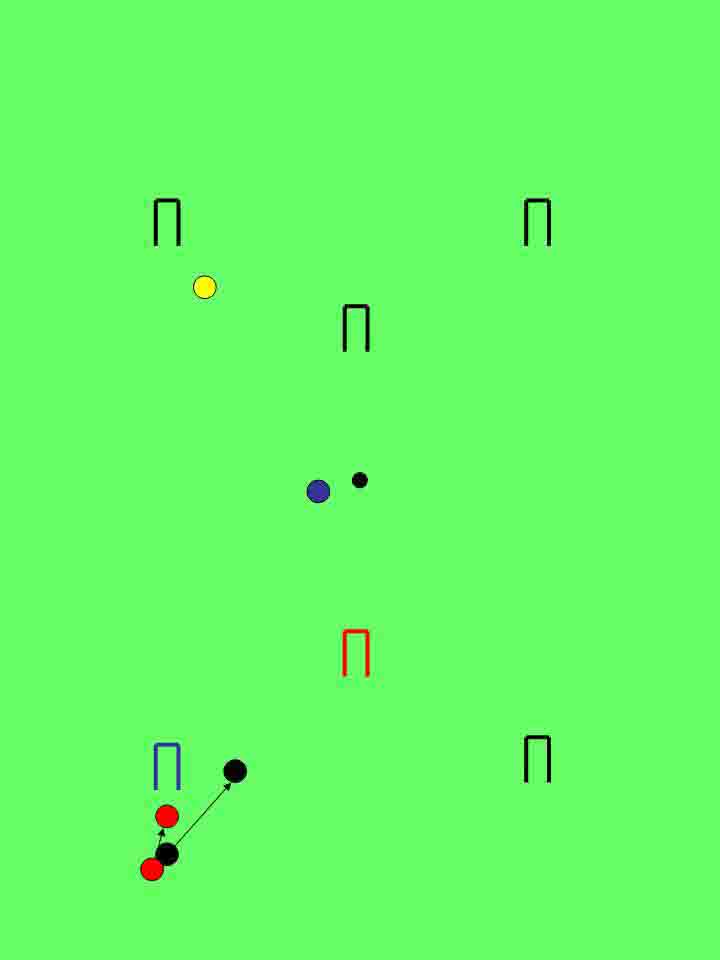
|
b). A rush
recreating familiar Exercise 2a).
- Playing with red,
use a rush shot to put yellow into driveable position for hoop 2, then
use
blue and black to run hoop 1 (as in Exercise 2a).
- Red firmly
rushes
yellow to croqueting position (and, as above.....)
- Red drives
yellow to hoop 2
- Red
roquets blue
- Red
takes off from blue to black
- Red rushes
black to croqueting position
- Red
drives/takes off from black to hoop running position
- Red runs
hoop 1
c). A cut rush to
begin Exercise 2b).
|
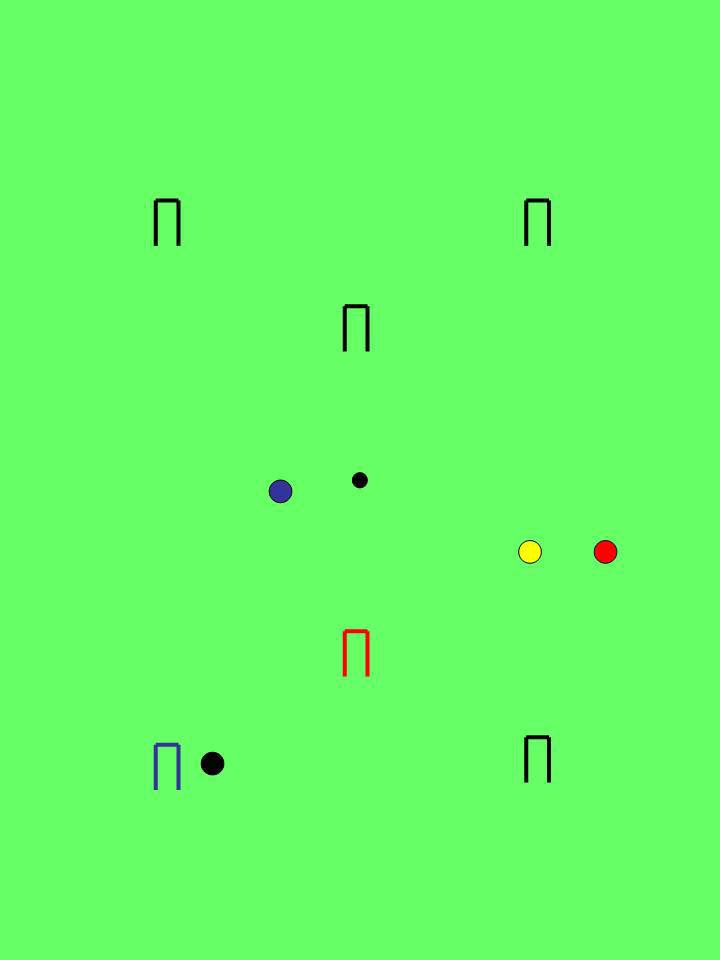
|
Lesson
3.
- Revision of
Drives & Rushes
- Stop Shot
(Straight & Split)
- Take up normal stance
- Make mallet grip higher and looser
- Stand back half a step/a couple of inches to
hit on the upswing
- Swing normally but do not follow through
- Use medium & soft strength shots to
emphasis same ratios achieved (practice)
- Half Roll
(Straight & Split)
- Take up normal stance, ensuring to play the
stroke between the legs
- Deliberately move feet forward with toes
level with the back edge of the striker's ball
- Move hands half-way down the mallet shaft
- Tilt mallet forward
- Address a point high
on the ball that the
mallet is to hit (this may entail some bending of the knees)
- Swing with some follow through
- Use medium & soft strength shots to
emphasise same ratios achieved (practice)
- emphasising 'push' stroke to be illegal
- proper roll shots produce top-spin
- note relative distance of balls according
to angle
of strike
- Full Roll (Straight & Split)
- Repeat with greater degree of roll
- Probable need to use side-style
- Deliberately move feet further forward
- Move hands further down the mallet shaft
without touching head
- Tilt mallet forward
- Address a point high
on the ball that the
mallet is to hit (this will
entail some bending of the knees)
- Swing with definite follow through
- Use medium & soft strength shots to
emphasis same ratios achieved (practice)
- emphasising 'push' stroke to be illegal
- proper roll shots produce top-spin
- note relative distance of balls according
to angle
of strike
- Four-Ball
Break Demonstration
- Place balls in ideal position on court with
simple rush to hoop 1
- Play break up to hoop four or five
- Bisques
- Introduce the notion of handicaps and bisques
- Use bisques as and when appropriate to
maintain control of break
|
Exercise
3.
a). Build on
Exercise 2 b). using half roll to
send hoop 1 reception ball to hoop 3.
|
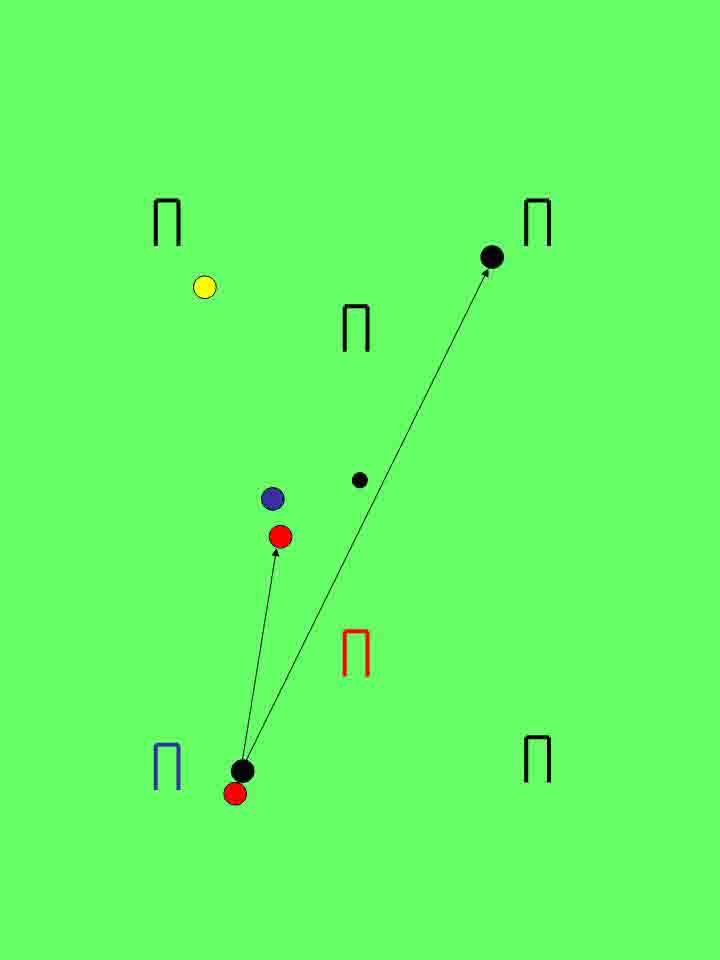
|
b). Four-ball break, starting
with a rush, as per Exercise 2 b)., using unlimited bisques for
mistakes
|
|
Lesson 4.
- Revision of
Types of Croquet Shots and Rushes (and their use in a four-ball break
demo.)
- Start of Game
- Toss customarily made by lower handicap player
- Choices to winner and loser of toss
- Demonstrate conventional start of a game
- Indicate possible continuation once 4 balls
on lawn
- Set up break using bisques
- Investing
Bisques
- From a seemingly unpromising situation, set
up ideal break ball positions by use of bisques
- Consideration of whether to use bisques or
let opponent play
|
- Repeat
Demonstration of 4-Ball Break
- Set up balls in unpromising positions and get
break going using bisques
- Playing red, shoot at yellow and take a
bisque if it misses
- Croquet yellow to hoop2
- Roquet (rush) blue towards the centre (if
possible); too early
for rush to south boundary
- Take-off to black
- Rush to hoop1 (use a bisque if necessary to
get on to hoop1)
- Continue 4-ball break
|
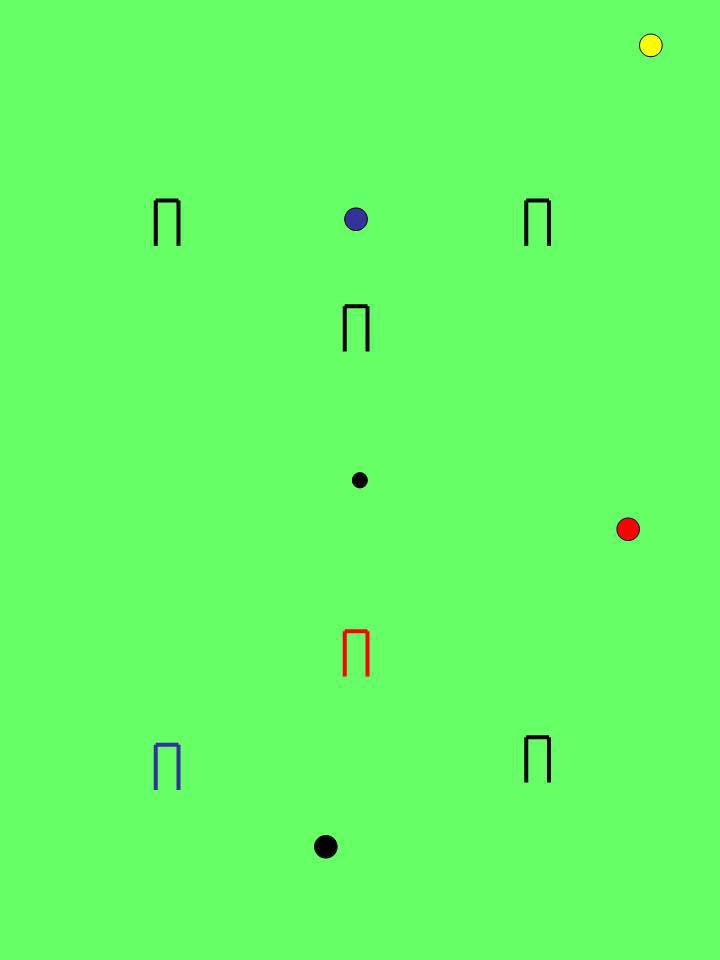
|
Exercise
4.
Play a game using alternate
stroke doubles
|
|
Lesson 5.
- Demonstration
of a 3-Ball Break compared to a 4-Ball Break
- End of Game
- Demonstrate peg out following 4-ball break
from penultimate
- Use of Two
Balls on a Yard-Line
- Set up opponent's balls on a yard-line
- Roquet and take-off to short of yard-line
balls
- Roquet either ball
- Take off to a position that gives a rush to
striker's ball's hoop
- Rush the ball to give a clear demonstration
of how much ground may be gained by a good rush (practice)
- Use of Rushes
to Make Croquet Strokes in a Break Easier
- Demonstrate how croquet strokes may be made
much simpler by rushing part way towards the pivot ball in a 4-ball
break
- Exercise 5.a)
- 2-Ball rushes to peg (count no. of shots)
- General Queries
- Answer any questions that may arise
- Consider the desirability of showing faults
that may occur near to hoops
- Consider explaining the law on wiring lifts
|
Exercise
5.b)
Start to play a game
|
|
Lesson 6.
- Play a Full
(Short) Game
- Play doubles with 10 bisques per team
|
|
